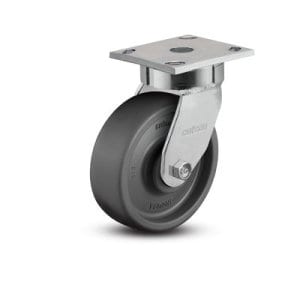No other work environment is in constant movement like that of the Aeronautical industry. This is one industry that is so dependent on movement that having everything be able to move quickly and efficiently with little to no down time is vital to the livelihood of the business. Although there is much movement that is visible by those utilizing the airline services, including luggage carts and carriers, flight attendant carts and even moveable airline doors, large portions of the movement that makes the aeronautical industry run, happens behind the scenes. A large part of industry movement occurs out of sight of the average customer. Just because a large portion of industry movement occurs out of sight, it does not mean that it is not a vital part of how the industry interacts with the customer. Actually, the efficiency with which the movement that occurs behind the scenes happens is an important aspect to ensuring customer satisfaction.
The Center of the Industry
The entire industry revolves around the airplane itself, and therefore, much of the industry’s movement is in direct correlation to the actual machines that take flight to serve the customer base. The basic everyday actions and daily duties require much back and forth movement. And is well understood in any movement industry, the constant back and forth often requires that there is regular maintenance checks and repairs on any equipment that is used in order to keep things running smoothly and efficiently. Everyday, just the supplies and food items that need to be transported to an airplane constitutes an enormous amount of movement. Or take a moment to contemplate the number of pieces of luggage that needs to be transported with each flight to meet the corresponding plane. Yet another aspect of daily industry activity to be considered is the many parts and materials that need to be transported from storage areas to the planes to be able to maintain, replenish and restore the mechanical parts of the airplane.
A Material Matched to the Industry
The aeronautical industry is a hard working industry. And any piece of equipment that makes up part of the daily work activities of the industry needs to be able to withstand the pressure and work that is required of it. There are a few materials that are better suited than others. Certain materials are known for their durability and toughness, their ability to last under extreme conditions. One of those materials is stainless steel.
Stainless Steel Uncovered
Stainless steel is a very useful material. From a scientific perspective, it is considered to be a low-carbon steel. This means that usually, by weight, it contains chromium of 10% or more. This is important because chromium is the material that enables stainless steel to possess some of its most useful and desirable characteristics. One of the most well known characteristics of stainless steel is its tendency for corrosion resistance. This is made possible by the chromium, which allows for a chromium oxide film to form on the surface of the steel. This film acts much like a self-healing covering and this enables the steel to be resistant to external damage that may be due to unfavorable conditions. There are more than sixty different grades of stainless steel. Each of them offers different levels of strength and benefits according to the makeup of the steel, making it a good material for a variety of circumstances and work settings.
A Very Important Item For Mobility
One item that is used often in mobile settings is a small and often overlooked mobility accessory, the caster. Casters are useful in many situations, enabling otherwise stationary items and pieces of equipment to be made mobile. A particularly useful option of casters is those made partially or wholly of stainless steel. These can be especially useful in an industry such as the aeronautical industry because any equipment or accessory that is utilized in this industry may be exposed to various types of work conditions and environments.
Just One Example
One example of the heavy-duty stainless steel casters that are available for today’s industry are the Colson Caster Four Series. They have a load capacity of up to 1250 lbs. per caster and some of the regular features that are included are:
• Polished stainless steel (Grade 304).
• Full double ball hardened raceways.
• 1/2″ hollow axle with grease zerk and lock nut is stainless steel.
• 1/4″ steel top plate for durability.
• Permanent rivet king pin with 5/8″ diameter rivet.
• Grease fittings: wheel bearing and swivel raceway.
• “Colson 45″ multi-temp grease lubricates in extreme hot and cold temperature.
• NSF Listed.
Also, there are more specialized options, in addition to the standard ones, that are available, such as optional top-plates, Delrin-cage stainless roller bearings and solid stainless wheels for extreme work and industry conditions.
Helping Your Business to Make the Best Choice
This is just one example of the types of casters that are available. And with today’s constantly improving technologies there are more and more readily available options. No matter what the specific needs are of your industry there are casters that are made to fit your needs. We at Douglas Equipment, with more than fifty years in the movement equipment business, understand that the choices can sometimes seem overwhelming. That is why we pride ourselves in thoroughly knowing our products and being able to communicate that knowledge to our customers so that they can make quality informed decisions that they are happy with. We offer a full in-stock selection of items and will readily order items that are more specialized to your specific needs. Please contact us Toll-free at 1-800-451-0030, locally at 305-888-3700, or by faxing us at 305-883-9563. We can also be reached electronically through the Contact Us section on our website. We look forward to hearing from you and helping you to find the best moving equipment and accessories for your business.





